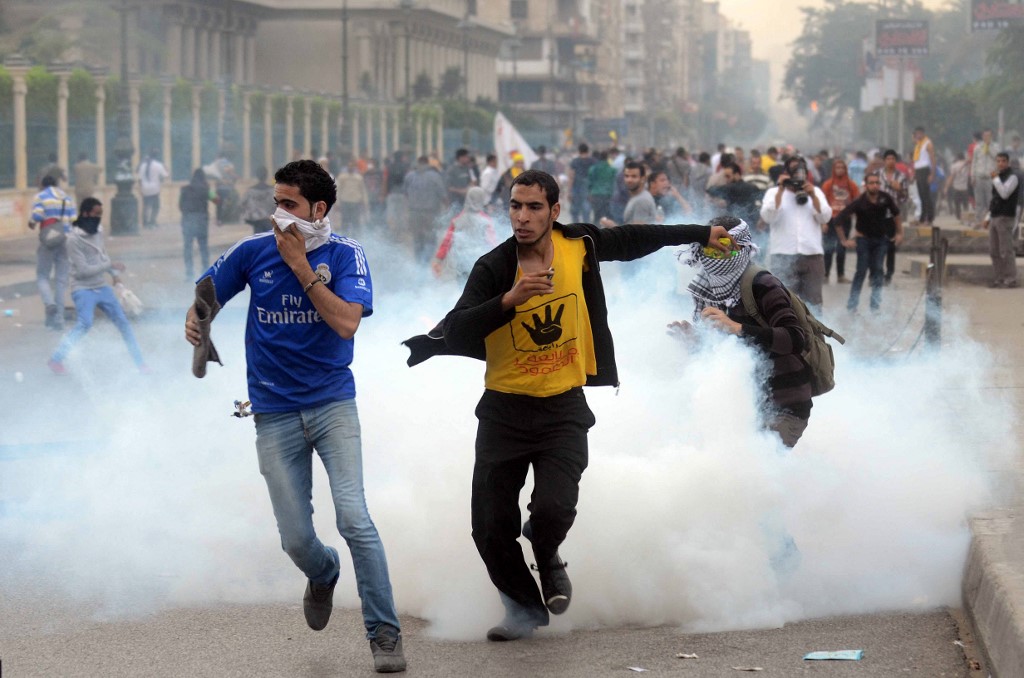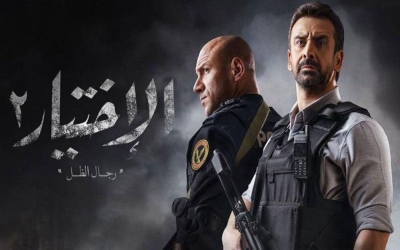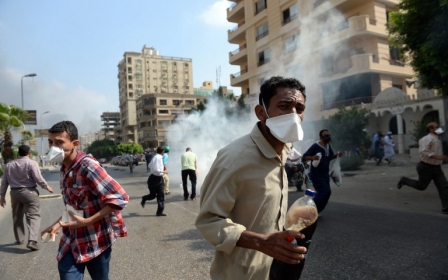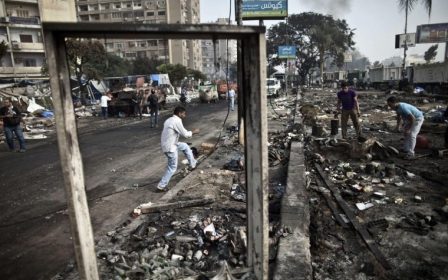Egypt: How Sisi regime turned Rabaa massacre into its foundation myth

On Saturday, the fifth episode of the Ramadan TV series The Choice: Part Two aired on Egyptian TV channels. The episode depicts the events of the dispersal of the 2013 peaceful sit-in at Rabaa al-Adawiya Square, which led to the mass killing of at least 817 - likely more than 1,000 - protesters.
The series was produced by Synergy, a company indirectly owned and controlled by Egyptian intelligence services. As a result, the narrative - depicting protesters as armed and fanatical, while security forces exhibit high levels of restraint - reflects the semi-official narrative of the regime.
The same justification used to repress the Muslim Brotherhood was later used against the secular opposition and activists
The choice to dramatise the worst massacre in Egypt’s modern history, a deeply polarising event, might appear peculiar - but this massacre is a foundational event for the regime, and the myth built around it is of the utmost importance.
Before Egyptian security forces committed the Rabaa massacre in August 2013, Abdel-Fattah al-Sisi, then the defence minister, called for mass protests to authorise him to “fight terrorism” - a clear reference to the forceful dispersal of the Muslin Brotherhood sit-in. This call was accompanied by a mass propaganda campaign that the sit-in was armed, and that protesters were abducting and torturing citizens.
The strategy was not simply to create popular support for a repressive state action, but to manufacture an act of communal killing; in other words, soliciting the active participation of a large segment of the populace in the mass killing of political opponents. This was manifested on the day of the massacre when protesters attempting to flee the violence were arrested by vigilante groups comprising local residents.
New MEE newsletter: Jerusalem Dispatch
Sign up to get the latest insights and analysis on Israel-Palestine, alongside Turkey Unpacked and other MEE newsletters
Communal killing
This initial act of communal killing created an organic link between the regime and a large segment of the populace that condoned the massacre and actively supported it. The same justification used to repress the Muslim Brotherhood was later used against the secular opposition and activists.
This act of communal killing had ideological underpinnings in Nasserism and the brand of Arab nationalism that it propagated, which viewed the nation as an organic, harmonious whole with a clear popular will, rather than a myriad of different social groups with conflicting interests that needed to be mediated.
When the nation manifests its popular will through the military, that becomes the embodiment of the national spirit. This not only lays the foundation for an extreme form of chauvinistic nationalism, but also justifies the mass repression of political opponents and minorities.
At the time of the massacre, the Muslim Brotherhood was cast as "outside" the nation, thus justifying its mass repression. Dissension from the "popular will" was considered an existential threat to the idea of an organic state held together by vague and ill-formed notions of national identity.
This ideological underpinning was later used to repress the secular opposition, the burgeoning feminist movement and others, with the nation’s "popular will" depicted as deeply socially conservative and patriarchal.
Symbolic value
The massacre also held symbolic value, rivalling that of 28 January 2011, when protesters were able to defeat security forces and openly claim public space for the first time in decades. In essence, the massacre was a reversal of that event. Security forces reclaimed the public space through spectacular and symbolic violence, including what appeared to be a systematic policy of inflicting as many casualties as possible.
The spectacle of violence communicated a clear message: the gloves were off. No repeat of the 28 January events would be tolerated, no matter how heavy the death toll. This was an escalation of violence with the potential to rival Syria, with mass, indiscriminate killings of peaceful civilians suspected of being members of the opposition.
From that moment onwards, the public space was reclaimed by the regime - a level of control that would be legalised via the anti-protest law approved in November 2013. When the spectre of mass protests again haunted the regime in September 2019, Sisi met his supporters in the same place where he massacred his opponents in 2013: Rabaa square.
The consequences of the massacre are legion and long-lasting, laying the foundations for a deeply polarised political system. The massacre made it impossible for the Muslim Brotherhood to accept the new political reality or to engage with the political process, as any such attempt by the leadership could have led to the group’s dissolution amid pressure from its base.
After the massacre, the Brotherhood was also excluded from the political process and later designated a terrorist group. This polarisation allowed the regime to essentially de-politicise politics, portraying political differences as an epic struggle between the nation, personified as the regime, and its opponents, who Sisi would later call “the people of evil”. This allowed the regime to widen its repression to cover all opposition groups, with wide popular support.
Reinforcing logic
This also allowed the regime to gloss over its failure in the economic and social spheres, as opposition to any of its policies was depicted as a conspiracy by evil forces in league with the Muslim Brotherhood to destroy the nation. This reinforcing logic created a state of constant emergency, allowing the regime to deepen its repression.
The regime needs continuous enemies and conspiracies to justify its hold on power, and mass acts of repression are necessary to prove to its base the existence of these enemies.
The social costs, and the heavy personal traumas haunting victims of the massacre, are difficult to fathom. They can only be overcome by reckoning with the past and a deep process of reconciliation, which is not possible in current circumstances. But until this happens, the massacre will continue to cast a long, inescapable shadow on Egyptian society and politics.
The views expressed in this article belong to the author and do not necessarily reflect the editorial policy of Middle East Eye.
Middle East Eye delivers independent and unrivalled coverage and analysis of the Middle East, North Africa and beyond. To learn more about republishing this content and the associated fees, please fill out this form. More about MEE can be found here.







